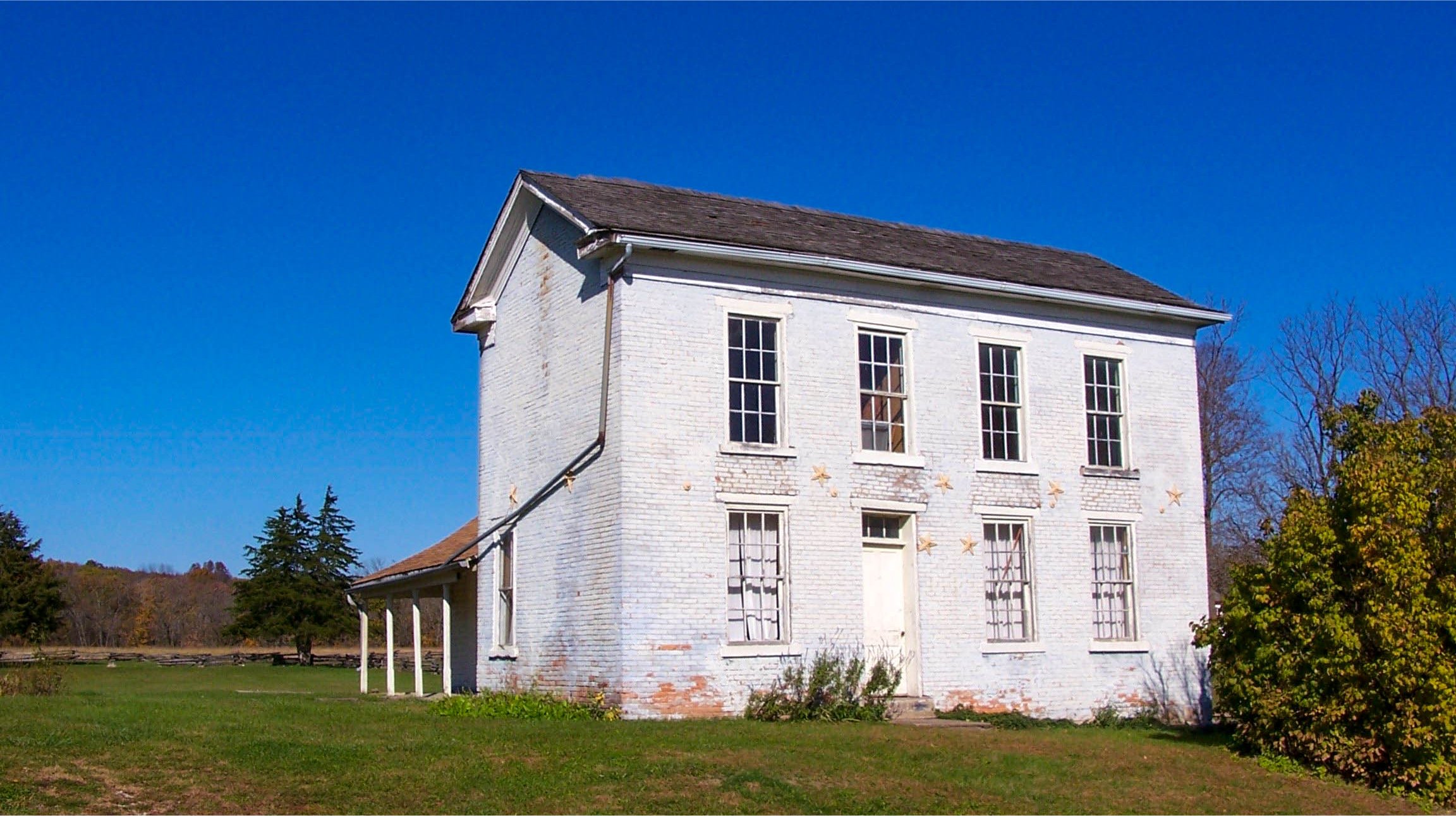Visitors Guide to Attractions
Lewis & Clark Counties, Missouri
Lewis and Clark Counties offer a variety of attractions for visitors. History can be taken in at both the Iliniwek Village State Historic Site, where a pre-European Native American village is interpreted, or at the Battle of Athens State Historic Site, the site of a Civil War battle and a site of a 19th century settlement. The Battle of Athens site also provides activities where visitors can engage with nature as well as camping opportunities. Wakonda State Park offers similar nature and camping opportunities.
Battle of Athens State Historic Site
Revere, MO
On Aug. 5, 1861 Union commander Colonel David Moore's force of under 500 men repelled Colonel Martin Green's pro-Confederate State Guard of about 2,000 men, who were trying to rescue the river port town of Athens from Union occupation. Today, the historic site administers the remaining buildings of the now defunct town of Athens, including the Thome-Benning House, which was pierced by a cannonball during the battle. Exhibits and tours interpret the battle and the history of the town. The site also offers hiking trails, a lake for fishing, picnic sites, basic and electric campsites, and more than a mile of frontage on the Des Moines River.
Iliniwek Village State Historic Site
Wayland, MO
The Iliniwek Village State Historic Site is the largest and best preserved remnant known of any Native American village of the Ilinwek or Illinois tribe. This site was occupied during the mid 17th century when Europeans were just contacting Native Americans in this region. The site was excavated in the 1990s revealing storage pits, fortifications, and evidence that as many as 8,000 people lived here. The historic site interprets the history and daily life of the Illini and the Jolliet and Marquette expedition of 1673. A short walking trail crosses the site, and the location of an excavated Illinois longhouse is marked to show its size.
Lincoln School
Canton, MO
Lincoln School, located in Martin Park, was established in 1880 to provide education to African-American children in the Canton area. It served as a school until 1955 when all children began attending the public school. It is only one of a handful of red brick schoolhouses left and serves as a tribute to rural education in this country. Funds are currently being collected to restore the building.
Lock & Dam #20
Canton, MO
Lock & Dam 20 is located at the north end of the Canton riverfront area. Visitors are welcome from 8 am to 12 pm each day. The lock & dam was completed in 1936 and is maintained by the U.S. Army Corps of Engineers. Visitors to the dam can sit and enjoy watching a towboat lock through, bald eagles in the winter, or pleasure crafts on the water.
Wakonda State Park
La Grange, MO
Wakonda State Park is composed of land that once was mined of gravel used to surface Missouri's secondary highways. The land has been transformed into a recreation area featuring six lakes, hiking and bicycling trails, and a rare sand prairie.
Mark Twain Casino
La Grange, MO
Mark Twain Casino is fully equipped with new and exciting casino games in the Midwest. Play slots, blackjack, craps and more!
Nearby Attractions
Lee County, Iowa
There is a wide range of attractions for visitors to Lee County, ranging from historical sites such as Old Fort Madison and the George M. Verity River Museum to the scenic views atop the bluffs of Rand Park. For those interested in Mormon history, Lee County is the beginning of the Iowa Leg of the Mormon Pioneer National Historic Trail and has a number of interpretive exhibits throughout the county.
Hancock County, Illinois
Hancock County is rich in history and offers other types of attractions as well. Today Hancock County is most known for its Mormon history. This era of life in Hancock County can be fully explored by visiting sites such as the Historic Nauvoo Visitor’s Center, the Family Living Center, and the Carthage Jail. Other aspects of Hancock County’s history can be found at the Weld House Museum, the Rheinberger Museum, and the Kibbe Hancock Heritage Museum. The natural beauty of Hancock County can be seen at Nauvoo State Park and the Weinberg-King State Fish and Wildlife Area.
Adams County, Illinois
Quincy is the main attraction in Adams County. This city that sits on the bluffs overlooking the Mississippi River is home to a number of interesting places to visit. The Dr. Richard Eells House is recognized by the National Parks Service as an important Underground Railroad site. The John Wood Mansion is the restored home of Quincy’s founder and the twelfth Governor of Illinois, John Wood. Indian Mounds Park is one of the few places in the state where visitors can view Native American mounds. Quincy Museum in the Newcomb-Stillwell Mansion is home to exhibits on the Victorian era, Native American artifact exhibits, and a dinosaur exhibit. The Villa Kathrine is a unique example of Mediterranean architecture in the Midwest. and is home to the Quincy’s Tourist Information Center, a convenient first stop for visitors to Quincy. Rural Adams County features the Golden Windmill, the only smock mill with its original stones and gears in Illinois, and the 3,323-acre Siloam Springs Park.
Pike County, Illinois
Abraham Lincoln spent a good deal of time in Pike County prior to his election as President. There are probably more houses associated with Lincoln in Pittsfield that any other city in the state and the city has put together a unique Talking Houses of homes and sites associated with him. There are also a number of small historical museums that preserve the heritage of the small rural communities of the county. Lake Pittsfield offers a wide variety of activities such as boating, fishing, picnicking, camping, and the park hiking and biking trails.
For Travelers Down the River
Missouri's Lincoln Hills
The Lincoln Hills region of Missouri north of St. Louis is often called the Northern Ozarks. In the north is Hannibal, which conjures up images of the steamboat era and has become virtually synonymous with Mark Twain, Tom Sawyer, and Huck Finn. South of Hannibal is the Little Dixie Scenic Byway that travels atop limestone bluffs and through the real river towns of Clarksville and Louisiana. At the foot of the Lincoln Hills in Lincoln County is Cuivre River State Park, one of Missouri's largest and most rugged.
Meeting of the Great Rivers Scenic Byway
The Meeting of the Great Rivers Scenic Byway area is one of America’s newer scenic byways. With over 20,000 acres of forest and wetlands at the heart of the Mississippi Flyway, it is a nature lovers paradise. Visitors will find spectacular colors in the fall and bald eagles in the winter. History abounds in the region ranging from the prehistoric Cahokia Mounds to sites on the National Register of Historic Places.























